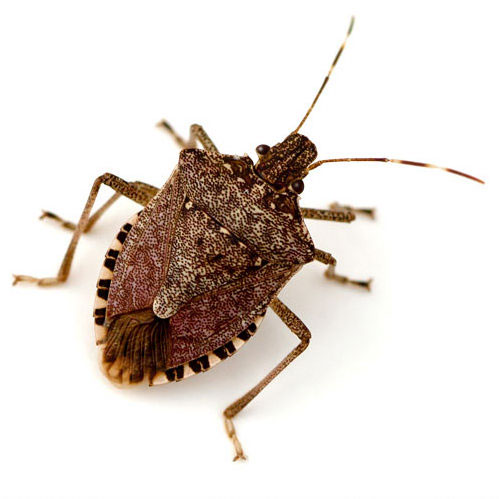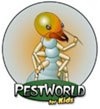Brown Marmorated Stink Bugs
 Brown marmorated stink bugs, scientifically known as Halyomorpha halys, are an invasive species of stink bug that has garnered significant attention and concern in recent years. Originally native to East Asia, these insects have spread to various parts of North America, Europe, and other regions around the world. Brown marmorated stink bugs are named after their characteristic brown, mottled appearance and the foul odor they emit when threatened or crushed.
Brown marmorated stink bugs, scientifically known as Halyomorpha halys, are an invasive species of stink bug that has garnered significant attention and concern in recent years. Originally native to East Asia, these insects have spread to various parts of North America, Europe, and other regions around the world. Brown marmorated stink bugs are named after their characteristic brown, mottled appearance and the foul odor they emit when threatened or crushed.
These stink bugs are medium-sized insects, measuring about 1.5 centimeters in length. They have a distinctive shield-shaped body with a brownish-gray coloration, marked by lighter bands on the antennae and legs. When at rest, they often tuck their legs underneath their bodies, resembling a compact shield.
One of the main reasons brown marmorated stink bugs have gained attention is their significant impact on agriculture. They are highly polyphagous, meaning they feed on a wide range of plants, including fruits, vegetables, and ornamental crops. These stink bugs use their piercing mouthparts to extract plant sap, causing damage to leaves, stems, and fruit. Infestations can lead to reduced crop yield, cosmetic damage, and even complete crop loss in severe cases.
Furthermore, brown marmorated stink bugs have a strong dispersal capability, aided by their ability to hitchhike on various modes of transportation. They can easily infest homes and buildings, seeking shelter during the colder months. Once inside, they can become a nuisance, releasing their characteristic odor and staining surfaces when disturbed.
The foul odor emitted by brown marmorated stink bugs serves as a defensive mechanism against predators. When threatened, they release a noxious chemical that deters potential predators and makes them unpalatable. While the odor may be unpleasant to humans, it poses no significant health risks.
Efforts to manage and control brown marmorated stink bugs have been challenging due to their reproductive capacity and adaptability. They have multiple generations per year, and their eggs are laid in clusters on the undersides of leaves. Integrated pest management strategies, including the use of insecticides, pheromone traps, and biological control agents, are being employed to minimize their impact on agriculture.
Research is ongoing to better understand the behavior and ecology of brown marmorated stink bugs, as well as to develop sustainable and effective control measures. Additionally, public awareness campaigns are being conducted to educate homeowners, farmers, and gardeners about the identification, prevention, and management of these invasive pests.
In conclusion, brown marmorated stink bugs are invasive insects with a significant impact on agriculture and a nuisance factor in residential areas. Their feeding habits, dispersal capabilities, and defensive mechanisms make them a challenging pest to manage. Ongoing research and integrated pest management approaches are crucial in mitigating the economic and ecological damage caused by these stink bugs.






 Milwaukee, Waukesha, Ozaukee, and Washington Counties
Milwaukee, Waukesha, Ozaukee, and Washington Counties